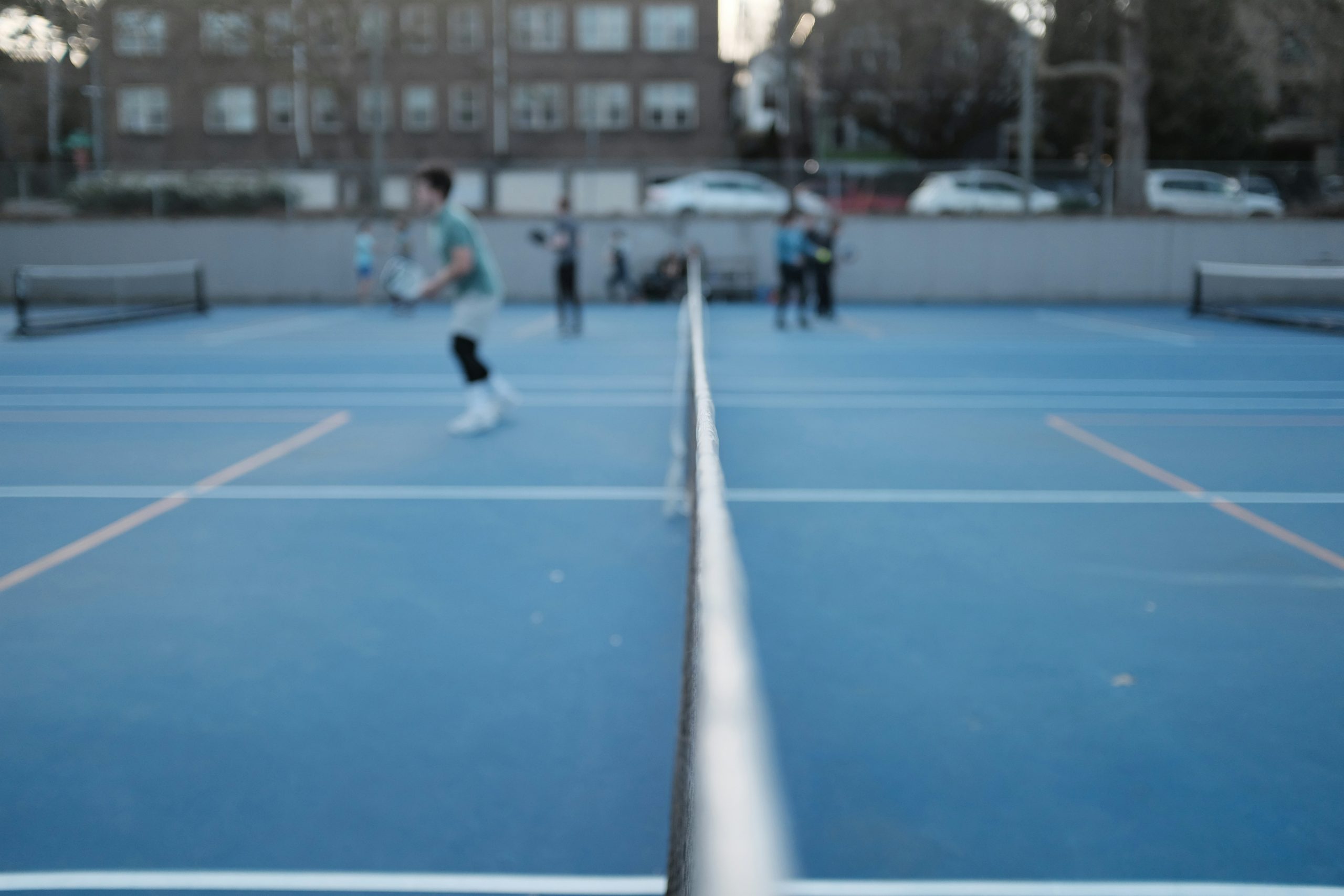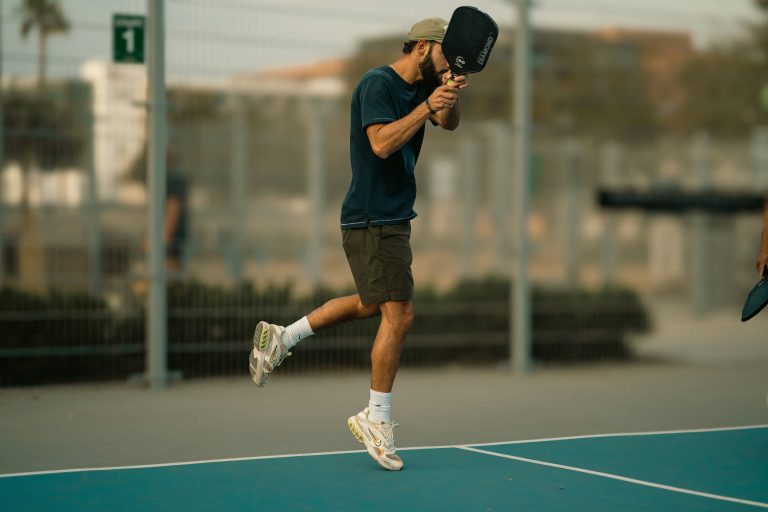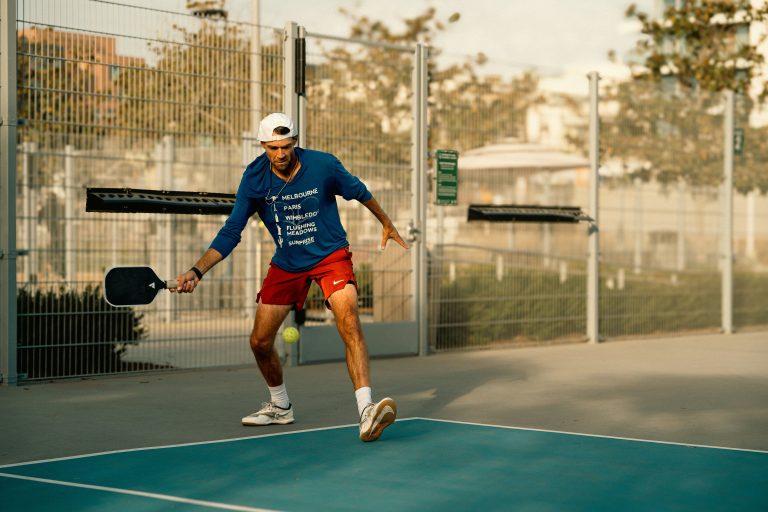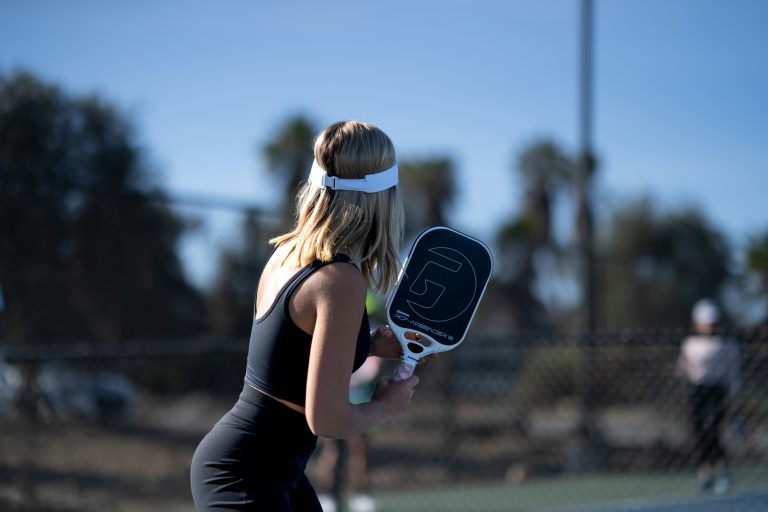Do Thicker Pickleball Paddles Reduce Vibration? (14mm vs 16mm vs 13mm)
Updated September 2025
Every pickleball player has had that moment: you line up for a drive, mishit by an inch, and feel a sting shoot through your fingers or forearm. Sometimes it lingers for a rally or two. Sometimes it leaves your arm sore the next day.
It’s easy to blame technique, the ball, or just bad luck, but one of the biggest factors in how much vibration you feel is paddle thickness. Whether you’re playing with a slim 13mm, a middle ground 14mm, or a thicker 16mm build, the core thickness directly changes how energy travels through the paddle and into your arm.
And here’s why it matters: vibration doesn’t just affect comfort. It can be the difference between loving long pickleball sessions or icing your elbow after every tournament. Let’s break it all down.
Why Vibration Matters More Than You Think
Pickleball is addictive, but it’s also repetitive. You’re hitting hundreds of balls per session, and every small shock adds up. That “zing” you feel in your fingers isn’t harmless, it’s energy that wasn’t absorbed by the paddle.
For new players, vibration can feel like a nuisance. For competitive players, it can turn into chronic discomfort: wrist twinges, tennis elbow flare-ups, or aching forearms. That’s why paddle companies keep pushing innovations like foam injected walls, edge filling, and thicker cores. They’re not just buzzwords, they’re about making paddles livable for the long haul.
What Thickness Actually Changes
Paddle thickness usually comes in three flavors:
- 13mm (thin): quick, lively, and firm.
- 14mm (mid): balanced, cushioned without going dull.
- 16mm (thick): soft, plush, and built for control.
Think of it like mattresses or shoes: a thinner paddle is like a thin and firm bed, you feel every movement. A thicker paddle is like memory foam, it absorbs more shock, spreading it out before it reaches you.
The polymer honeycomb inside the paddle is the secret. Thicker cores have more material to “soak up” the ball’s energy, while thinner cores bounce that energy back into your hand (and the ball). Neither is better across the board, they just create very different feels.
The Science of Energy and Shock
When the ball strikes your paddle, energy has to go somewhere. Some goes back into the ball (power, pop), some dissipates inside the paddle, and the leftover travels into your hand as vibration.
- 13mm paddles: return more energy to the ball, which is why they feel so explosive. The trade off is that more leftover energy rattles into your arm.
- 16mm paddles: trap more energy inside the thicker polymer, extending dwell time and softening impact. They feel smoother but less explosive.
- 14mm paddles: sit right in between, giving you feedback and some pop without being too harsh.
Material also plays a role, raw carbon tends to spread shock better than fiberglass. Graphite sits in the middle so a 13mm carbon paddle may feel less harsh than a 13mm fiberglass one, even at the same thickness.
Player Experience: How 13mm, 14mm, and 16mm Actually Feel
Let’s translate the specs into on court reality.
13mm Paddles
These are fast, lively, and crisp. If you like feeling every shot, you’ll love them. But mishits sting. They’re addictive for aggressive counters and quick drives, but over time, they can punish your arm if you’re sensitive.
14mm Paddles
The “goldilocks” option. You still get feedback and pop, but the sting is noticeably reduced. Many balanced players land here because it keeps rallies fun without feeling like a brick.
16mm Paddles
The plush option. Contact feels softer, resets are easier, and the ball sits on the face longer. If you’re struggling with pain or want maximum comfort, this is where you start. But if you’re addicted to quick put-away power, you’ll need to generate more pace with your own swing.
Beyond Thickness: Other Vibration Factors
Thickness is big, but it’s not the only variable. Other design elements play just as big a role:
- Handle build: Longer handles with foam dampening cut down on buzz.
- Grip size: Too-small grips channel vibration straight into the wrist; larger grips spread it out across your hand.
- Edge foam or thermoforming: Modern builds stiffen the paddle’s edges, stabilizing off-center hits and reducing shock.
- Lead tape: Adding tape at 3 and 9 o’clock increases twistweight, which can calm vibration.
Arm Comfort Picks Players Swear By
Certain paddles have earned reputations as “arm-friendly” because of how they combine thickness, materials, and build. Here are some examples:
- JOOLA Perseus 16mm — Raw carbon, thermoformed, and foam-injected. A go-to for players who want stability and spin without harsh feedback.
- Paddletek Tempest Wave Pro 16mm — Not raw carbon, but one of the cushiest paddles ever built. Beloved by players with tennis elbow.
- Engage Pursuit Pro EX 6.0 — 16mm Toray carbon face, tuned for comfort and performance.
- Selkirk Vanguard Control — Built specifically for soft feel, low vibration, and long rallies.
- Gamma Hellbender 16 — Oversized head with NeuCore tech, forgiving on mishits and easy on the arm.
These aren’t magic cures, bad technique can still hurt you, but they’re proof that design choices matter.
When Thicker Isn’t the Answer
Thicker paddles aren’t for everyone. If you thrive on crisp put aways and lightning counters, a 16mm paddle may feel like overkill. The muted contact can frustrate power players who want instant pop.
Plenty of pros still choose 13mm or 14mm paddles because they prioritize quick attacks, even if it means more vibration. Comfort is important, but so is playstyle.
Practical Tips to Reduce Vibration Without Buying New
If you’re not ready to swap paddles, you can still soften the sting:
- Add an overgrip or build-up grip to increase shock absorption.
- Place lead tape at 3 and 9 o’clock for stability.
- Keep a loose grip, death, gripping your handle amplifies vibration.
- Warm up wrists and shoulders before matches.
- Rotate between paddles if you play daily.
Small tweaks can go a long way toward keeping your arm happy.
Bringing It Back to the Court
At the end of the day, paddle thickness isn’t just a spec sheet detail, it’s how your arm feels after two hours under the sun.
Thicker paddles (16mm) usually buy you comfort and longevity. Thinner paddles (13mm–14mm) give you crispness and quick pop. The best answer depends on what matters more to you: protecting your arm or maximizing speed.
If you’re struggling with sting or soreness, experimenting with a thicker paddle could be the best investment you make this year. If you crave pace and live for fast exchanges, you may still gravitate toward thinner builds.
The real win? Finding the setup that keeps you excited to come back tomorrow—not sidelined with ice packs.
How This Ties Into Paddle Choice Overall
Paddle choice isn’t just about thickness, it’s about matching gear to your body and style.
- If you’re chasing comfort: check out guides on paddles for tennis elbow, paddles for wrist pain, or paddles for shoulder pain.
- If you’re more curious about performance trade-offs: explore the Pickleball Paddle Weight Guide or our breakdown of the best control paddles.
FAQ: Do Thicker Paddles Really Help?
Do 16mm paddles really reduce vibration?
Yes. They absorb more shock through the core, which means less sting in your hand. But they won’t eliminate vibration entirely.
Is 14mm thick enough to protect my arm?
For many players, yes. It balances comfort with enough pop for power-driven play.
Are there arm friendly paddles under $100?
Yes. Some budget polymer-core paddles with 14–16mm thickness do a decent job, though they won’t feel as refined as premium builds.
Why do pros still use 13mm paddles?
Because performance matters. Thinner paddles are faster and more explosive, and pros can handle the extra vibration with conditioning and technique.
Does grip size really matter?
Absolutely. A grip that’s too small funnels shock into your wrist. A slightly thicker grip spreads shock across your hand.
Which is better for tennis elbow: carbon or fiberglass?
Carbon usually wins, it holds the ball longer and reduces harsh rebound compared to fiberglass pop.







